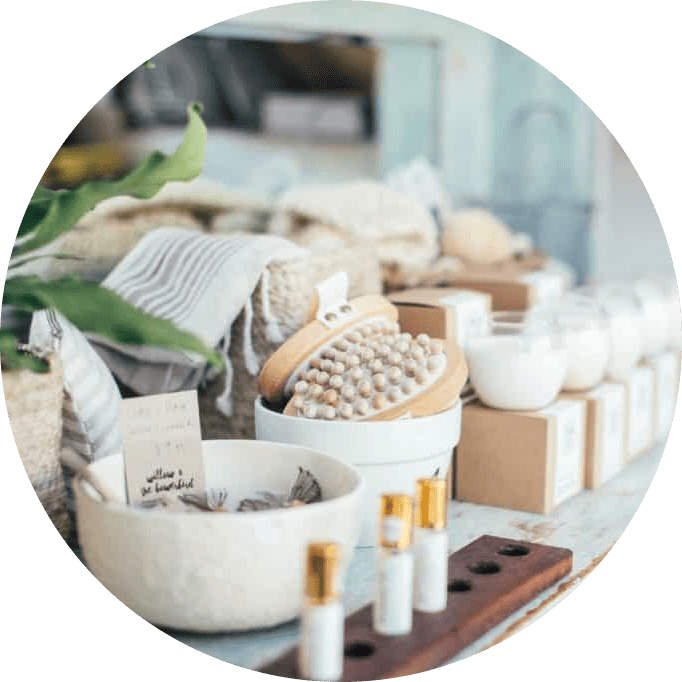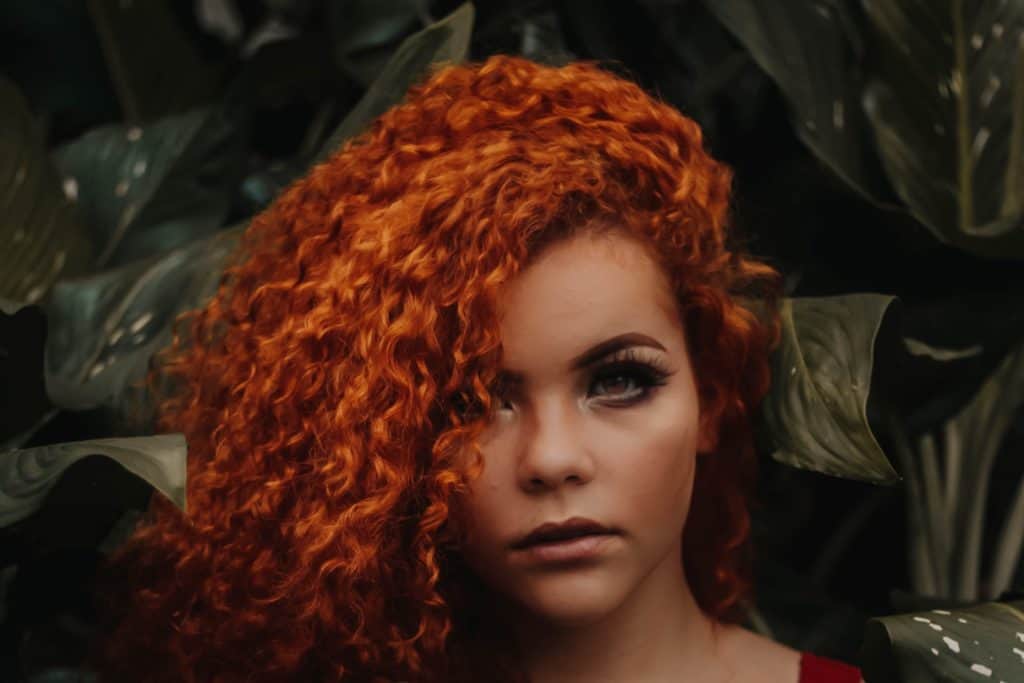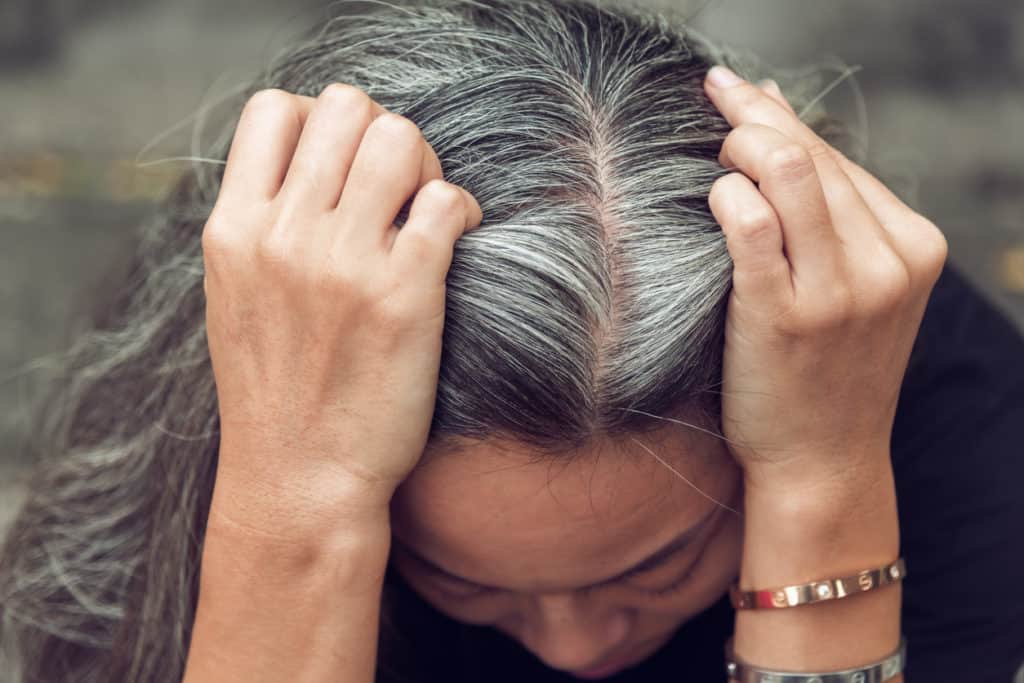Henna has been used for centuries to dye hair. The most well-renowned Henna comes from India, although it is also grown across other sub-tropical regions.
Today, it is still a popular alternative to a more harsh chemical color that can wreak havoc on your hair and health. These chemical colors are also rinsed down drains, so they have further implications for the environment’s health.
If you have decided to take a more natural route with hair coloring, then not only does this plant-based ingredient offer vibrant color, but it also has many beneficial properties that boost the health, length, and thickness of the hair.

Coloring your hair with Henna couldn’t be simpler. Even though it is daunting to begin with, after a little bit of trial and error, you’ll soon be on your way to having a healthy, vibrant head of hair that covers even the most stubborn of greys and gives long-lasting beautiful color.
What is Henna And How Does It Work?
Henna [Lawsonia inermis] is a powdered plant dye made from the shrub’s dried leaves. The pigment in the leaves, Lawsone, produces a vibrant red/orange color, which when mixed with a liquid such as water or tea to make a paste, has saturated color on the hair.
Henna works to dye hair by processing the dye molecules attaching to the protein molecules of the hair. Henna should be left on the hair for several hours to enable the dye to take fully.
Everyone’s hair is different, so it is a matter of trial and error. To find what works for you, start slowly; the beauty of Henna is it can be reapplied as often as needed, without damaging the hair. Don’t be alarmed if the color first appears too bright as it settles into its final result after about 2-3 days.

Ten Tips To Coloring Hair With Henna.
While it is easy to be daunted by using Henna, the more you persevere, the simpler it becomes. It is not a messy, arduous, or complicated process; after all, it has been done for thousands of years across many cultures.
With a little bit of knowledge and a bit of practice, it becomes easy to get a vibrant, rich color, even on dye-resistant greys, and free you from depending on more toxic chemical options.
How To Wash Hair Before Using Henna.
1. Wash the hair thoroughly before using Henna. Henna adheres to the hair shaft, so it needs to be free of any oils, build-up, or dirt to get the best result.
Use warm water and a natural Shampoo to clean the hair before application. DO NOT USE A CONDITIONER. Any conditioners can add too much oil to the hair for the Henna to adhere optimally.
Should Hair Be Wet Or Dry Before Applying Henna?
2. Apply Henna to freshly washed, combed, and damp hair. While you can successfully use Henna on dry hair, wet hair makes the application process more manageable and gives better saturation.
How Long Should You Leave Henna On Your Hair?
3. Leave Henna on the hair for a minimum of two hours. While you can leave it for much longer, two hours will give you a good level of saturation and is a good starting point for beginners to this process.
What Is The Best Type Of Liquid To Mix Henna With?
4. Mix Henna with filtered water to begin with [ you can experiment with tea or even coffee when you are more used to the process]. Follow the instructions on your packet for ratios, and stir well to get rid of all lumps.
Henna can be challenging to mix until completely smooth, so once you have a creamy paste, add a small layer of water, and leave 8-12 hours to dye release the Henna. Once stirred, after this time, the Henna will have completely absorbed the water and should be a smooth and silky paste.
What Type Of Henna Should You Buy?
5. Buy Premium Henna and Indigo whenever possible from reputable companies that supply the purest product available. Organic, high-quality Henna mixes better, produces a silkier paste that is easier to apply and wash off, and does not irritate more sensitive scalps. Henna can be adulterated, and we have added fillers to make it more cost-effective, so be careful when choosing it.

Indigo often slips from the hair, if you use poor quality so look for raw natural Indigo.

Can You Shampoo Out Henna After Application?
6. Rinse off with warm water or a small amount of natural, gentle conditioner. Conditioner bars work well for this as you can gently rub them around the scalp to loosen the Henna. Do not shampoo for at least 48 hours, as the Henna only settles and reveals its final color after this time.
We use these conditioner bars to easily rinse out Henna.

How To Wash Hair Colored With Henna?
7. Wash Hair that has been colored with Henna with Sidr powder. Sidr powder contains vitamins, mineral salts, tannins, flavonoids, and iron. Of course, you can use a gentle, natural shampoo or shampoo bar. Still, Sidr powder is a powered leaf, Ziziphus jujuba, that originates in India and is rich in mucilages and saponins. Therefore, it is recommended to cleanse after using Henna as it won’t strip any color. Use this especially if you have trouble with Indigo slipping from the hair, as it helps set the color.
Try; Yogi’s Gift Sidr Leaf Powder – Organically grown – Natural Herbal Hair Cleanser & Conditioner Rejunivates Hair follicles – Hair Care Powder

What Oils Can You Add To A Henna Mixture?
8. Adding a few teaspoons of hair beneficial oils to the Henna paste can not only aid with the application process, as well as ease of removal, but it helps hair prone to dryness.
Use an oil like organic Jojoba or Argan oil, but only in small amounts. Otherwise, the dye won’t saturate as well. Oils can help with the feel and condition of the hair.
We like to add Ayurvedic herbs to Henna, and like to add a few drops of this oil.
AyurVita Haircare – Amla & Neem Restorative Hair Oil – Bio-Certified Hair Treatment – Ayurvedic Haircare – Clean & Organic.

How To Do A Henna Gloss To Strengthen The Hair.
9. Use a Henna Gloss to revive hair color, and strengthen the hair without doing a complete Henna treatment. Mix a tablespoon or two of Henna that has been left to dye release [8-12 hours] into a conditioner or a hair mask, and put on the hair for up to an hour.
This is also an excellent way to test how Henna reacts with your hair and is less of a commitment, to begin with.
How To Store Any Leftover Henna Mixture?
10. Freeze any leftover Henna in ice cube trays to use later. This eliminates waste, plus means you have a ready supply of Henna for quick touchups or Henna Gloss treatments.
There is no point in freezing Indigo, as it stops working after a few hours of being mixed with water. Always use Indigo fresh, and use it immediately on preparation.
More Questions About Henna?
How Can You Color Grey Hair With Henna?
You can undoubtedly cover any grey hair you have by using Henna. If your hair only has a few strands of grey, you can achieve subtle red/orange highlights on brunette or brown hair.
Henna is vibrant and produces a bright orange color on pale or grey/white toned hair. To avoid this intense color, it needs to be darkened by mixing with Indigo, which will tone down the color to a warmer auburn, rich brown, or even black, depending on the ratio you use.

If hair is predominately white or grey, use a two-step process. First, color the hair with Henna, wait two hours and rinse off. Then color the hair with a mixture of Henna and Indigo. The more Indigo you use, the darker the color.

Henna likes to adhere to hair, whereas Indigo likes to stick to Henna. Over the next few days, you may need to use several more treatments of Henna and Indigo to get the desired result, especially on hair that hasn’t been treated with Henna before.
Can You Use Henna On Chemically Dyed Hair.
Wait 6-8 weeks from the time that hair was chemically color-treated. This will avoid very orange hair due to the ammonia in the chemical color.
The exact time also applies, 6-8 weeks, when chemically coloring hair previously treated with Henna. This will avoid hair turning green.
Conclusion.
Henna is a gentle, safe, and natural way to color hair without resorting to potentially toxic alternatives. Henna also improves the hair’s health without any damage and can be repeated as often as is necessary.
Hair colored with Henna often appears thicker and lusher and is often attributed to softening the hair and making curlier hair looser and more manageable.
Henna lasts for a few months before it gradually fades, but it is easy to do repeat treatments or Henna glosses to keep the hair healthy and vibrant.
This post contains affiliate links. If you purchase using a link on this post, we will receive a small commission. This does not affect your sale in any way.




